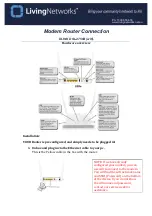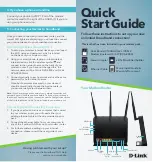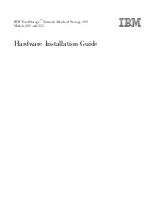
115
Configuring the DHCP server to send BOOTP responses in
RFC 1048 format
Not all BOOTP clients can send requests that are compatible with RFC 1048. By default, the DHCP
server does not process the Vend field of RFC 1048-incompliant requests but copies the Vend field
into responses.
This feature enables the DHCP server to fill the Vend field in RFC 1048-compliant format in DHCP
responses to RFC 1048-incompliant requests sent by BOOTP clients.
This feature is effective for the BOOTP clients that request statically bound addresses.
To configure the DHCP server to send BOOTP responses in RFC 1048 format:
Step Command
Remarks
1.
Enter system view.
system-view
N/A
2.
Enable the DHCP server to send
BOOTP responses in RFC 1048 format
to the RFC 1048-incompliant BOOTP
requests for statically bound addresses.
dhcp server bootp
reply-rfc-1048
By default, the DHCP server
directly copies the Vend field of
such requests into the responses.
Setting the DSCP value for DHCP packets sent by
the DHCP server
The DSCP value of a packet specifies the priority level of the packet and affects the transmission
priority of the packet.
To set the DSCP value for DHCP packets sent by the DHCP server:
Step Command
Remarks
1.
Enter system view.
system-view
N/A
2.
Set the DSCP value for DHCP
packets sent by the DHCP
server.
dhcp dscp
dscp-value
By default, the DSCP value in DHCP
packets sent by the DHCP server is 56.
Configuring DHCP packet rate limit on a DHCP
server interface
With this feature enabled, an interface discards DHCP packets that exceed the maximum rate.
To configure DHCP packet rate limit:
Step Command
Remarks
1.
Enter system view.
system-view
N/A
2.
Enter interface view.
interface interface-type
interface-number
N/A
3.
Enable DHCP packet rate limit
on an interface and set the
limit value.
dhcp rate-limit
rate
By default, DHCP packet rate
limit is disabled on an interface.
















































